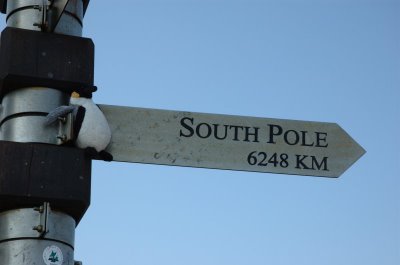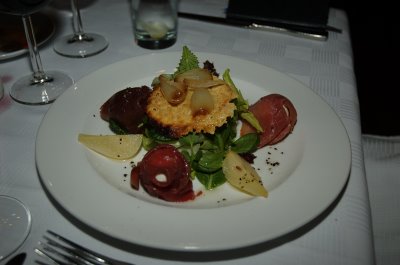I've already discussed penguins and other critters. Now it's time to write about the flora (or at least try... I'm far from an expert on plants and flowers), while at the same time giving an overview of some of the parks we visited (excluding Jonkershoek)... I think the overview of the parks will be slightly better than any attempt to describe the Cape flora...
The Cape Floral Kingdom
In general, fynbos is the major vegetation type of the botanical region known as the Cape Floral Kingdom, a member of the World Heritage list and the world's smallest and richest floral kingdom. It has the highest known concentration of plant species – 1300 per 10000 square km. 70% of the world's fynbos species are only found in the Cape Floral Kingdom. Fynbos includes proteas, including the king protea, the national flower of South Africa, and ericas (heaths). There are over 700 species of erica found in South Africa!
Kirstenbosch National Botanical Garden
Kirstenbosch National Botanical Garden only exhibits plants that are native to South Africa, which is quite impressive considering the size of the place (528 hectares) and the vast diversity of the plants, flowers, trees etc. on exhibit. Absolutely amazing! It's very beautiful and tranquil here - lots of green with bright colored flowers splashed here and there, good smells, and the peaceful sound of chirping birds...

My favorite part of Kirstenbosch was the Useful Plants exhibit, linked to the medicinal garden. You learn about what kind of plants can be used to cure illnesses, or alleviate symptoms, etc., as well as plants for food, making things (baskets etc), assisting in land conservation... they even had a whole section of plants that are used to treat sexually transmitted infections/diseases and another whole section of plants dedicated to treating the symptoms of HIV/AIDS in some way or other. Another interesting exhibit was one about how to choose plants for your garden at home, in particular plants that use little water.
One can easily spend a lot of time here. There's plenty of lawn space for a picnic... we'll try that next time ;-)
Table Mountain National Park
Table Mountain
Table Mountain is the most prominent landmark and a top tourist attraction in Cape Town. Table Mountain is called so because of its flat top; cloud cover looks like a tablecloth. The place is quite indescribable, but the website has a rather good way of expressing the splendor of the park:
The Park is recognised globally for its extraordinarily rich, diverse and unique fauna and flora - with rugged cliffs, steep slopes and sandy flats - is a truly remarkable natural, scenic, historical, cultural and recreational asset both locally and internationally. Nowhere else in the world does an area of such spectacular beauty and such rich bio-diversity exist almost entirely within a metropolitan area - the thriving and cosmopolitan city of Cape Town.
We took the aerial cableway up the mountain; we wanted to save time. Next time we'll do the hike up. We took this trail (don't remember the name – will edit once I do) which can be "hairy" if you're afraid of heights (I somehow managed OK), but well worth it. The views are spectacular, and there's lots of plant life to see; most of the animals were hiding. Be sure to wear long pants and proper shoes (not sandals!) when you're up there. There's lots of tall grass, bushes, Cape reed, and the such that can easily scrape you up... and it's a good hiding place for poisonous snakes...
Cape Point
A part of Table Mountain National Park, this park is one of the most incredible places I have ever been to in my entire life. It includes famous landmarks such as Cape Point and the Cape of Good Hope. Pssst... it seems like ostriches like to hang out on/around the road that leads to the Cape of Good Hope!
The whole area is huge and it's a good idea to have a car to get around. Also, if you visit Cape Point, bring some kind of jacket or sweater to protect yourself against the wind. Even if it's otherwise hot and sunny, the wind can make things chilly very quickly...
Oh, there are plenty of great photo opportunities, like the obligatory Cape Point and Cape of Good Hope shots...

as well as shots like this...

See boyfriend of feitpingvin's flickr site for the rest of the Kirstenbosch, Table Mountain, and Cape Point photos... (I may edit this page to link to them later on.)




































